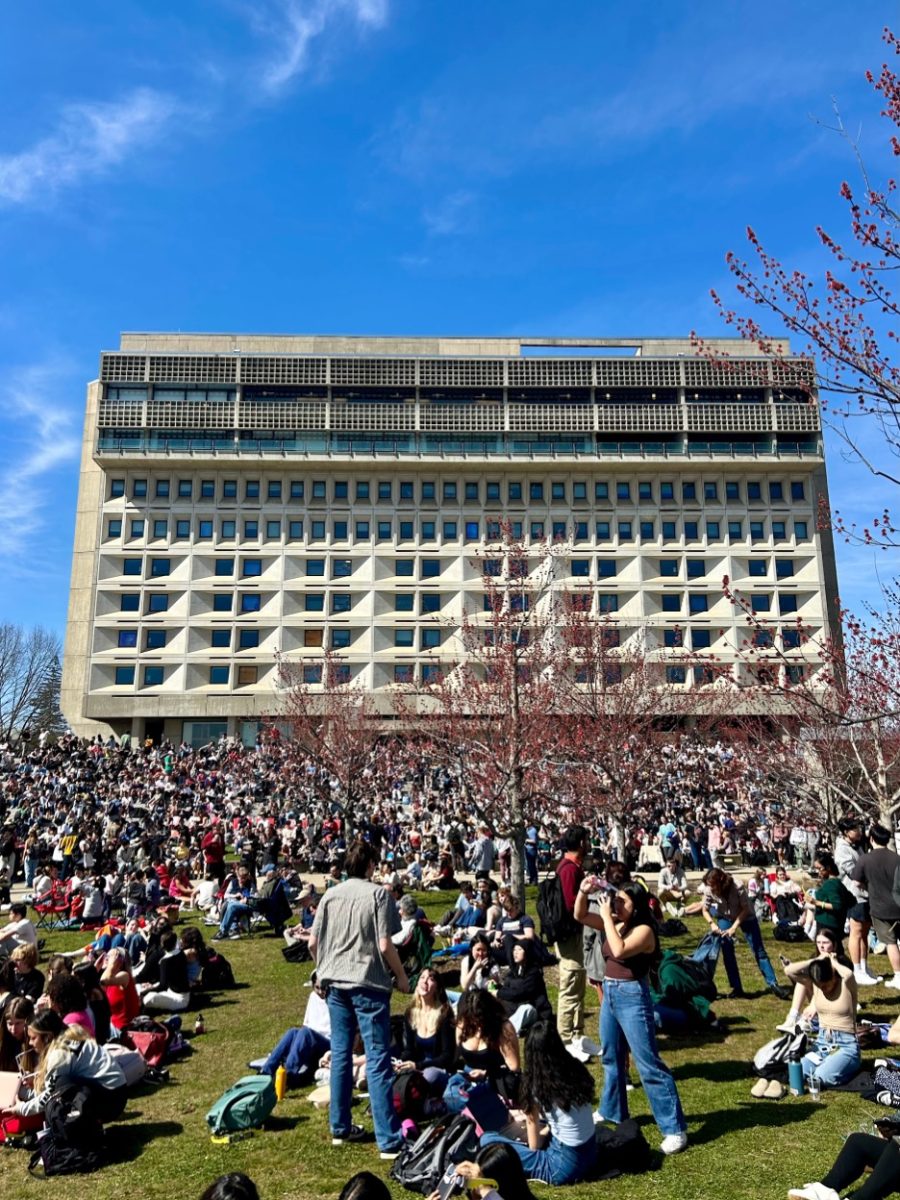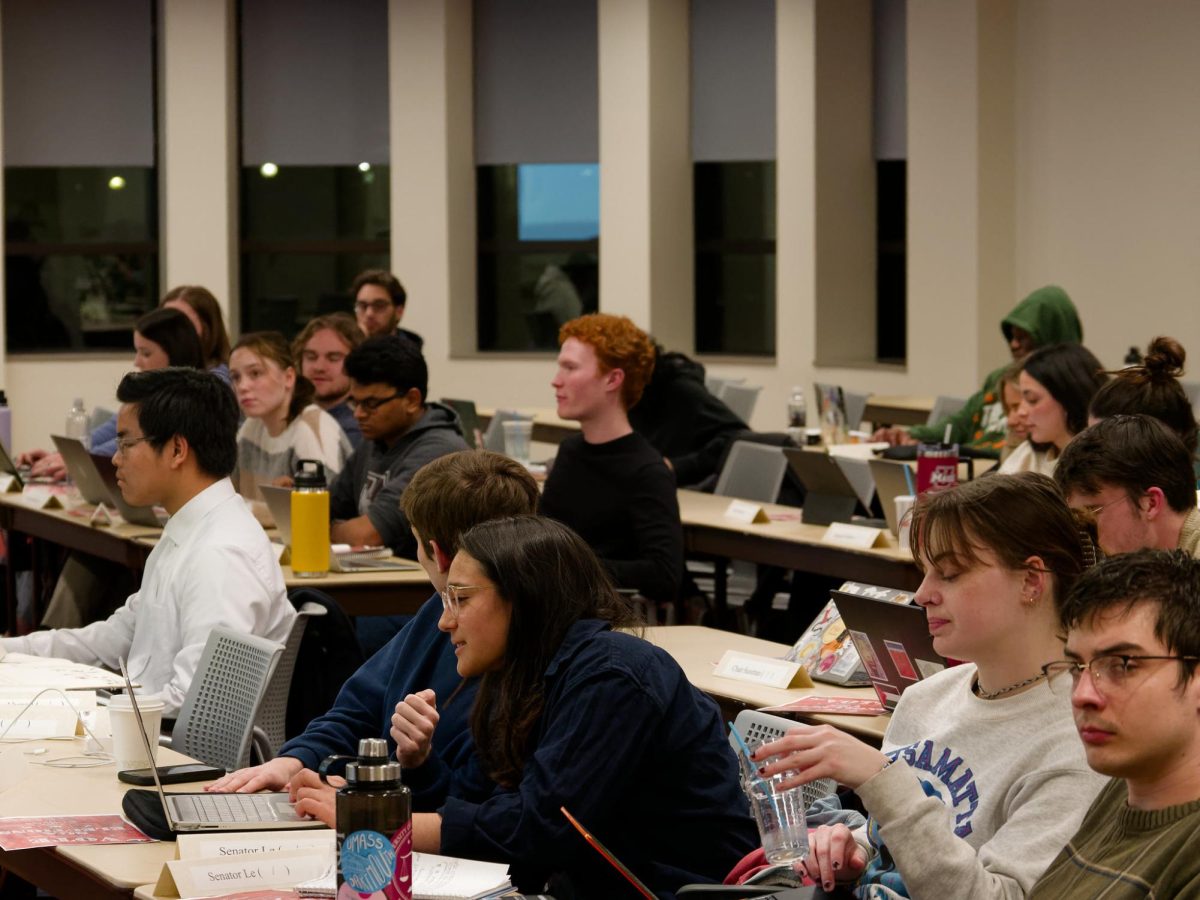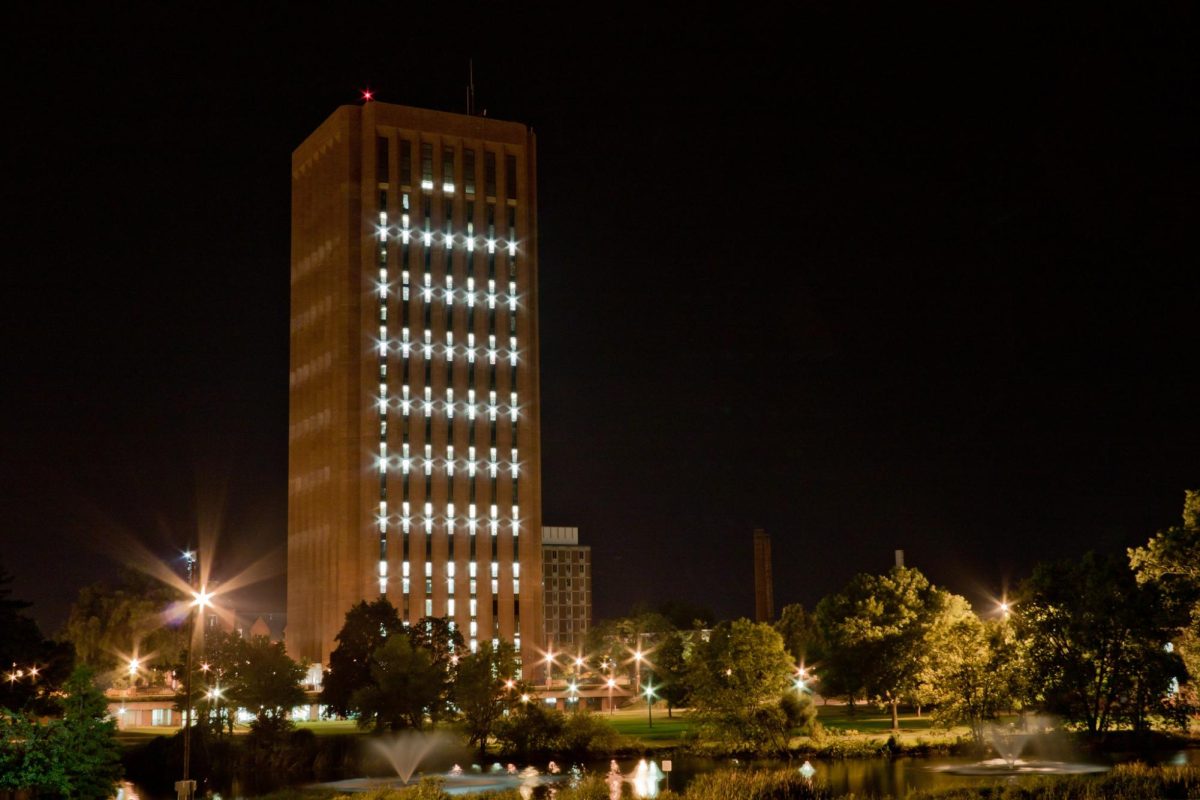
Delta Xi Phi Multicultural Sorority, in collaboration with the Amherst Irish Association, presented a panel on Irish culture and identity in the Campus Center Wednesday night to roughly 20 attendees.
The panel, “St. Patrick’s Day Meaning & Practices: A Conversation on Identity,” included two Irish-American students, Kathryn Rogers and Mary O’Connor, along with co-chair of the Amherst Irish Association Íde O’Carroll, and Anthony Tuck, associate professor of classics at the University of Massachusetts.
Blarney Blowout, the series of annual drinking parties held in Amherst on the first weekend of March, was the inspiration for the event, Rogers said. The event was created to help dispel unfortunate and harmful stereotypes perpetuated by Blarney.
“I think there is something very strange to a celebration that starts at 6 a.m. with a glass of vodka,” O’Carroll said.
O’Connor contrasted the St. Patrick’s Day celebration of her childhood, which involved food, music and family celebration, with the drinking culture of Blarney.
“It didn’t ring true to me,” she said. “It was about…keeping our history and identity alive.”
According to O’Carroll, the intent of the panel was to “open a conversation.”
“I think there is no one interpretation of what St. Patrick means,” she said.
The panel members discussed the evolution of Irish identity and cultural practices connected to St. Patrick’s Day in the context of Irish migration.
“The green and the white and the Catholic was never quite a true story,” said O’Carroll, who added people should be careful of attaching a single nature to the Irish identity.
Tuck presented a PowerPoint presentation on the archaeological history of the Celts as reflected in their migration patterns and discussed how St. Patrick himself fit into this history.
According to Tuck, the Celtic identity is subject to serious debate, but the first generally accepted instance of Celtic settlement is in Hallstatt, Austria.
Tuck traced the evolutionary migration of the Celts in terms of burial and ritual practices. In Hallstatt, grave excavations revealed simple inhumation burials associated with simple grave goods, he said.
Over time, burials began to reflect greater status-related roles in society, leading to the highly stature-based burials.
The second Celtic migration saw the Celts moving into the British Isles, and remaining rural, tribal societies, Tuck continued.
Tuck described the environment in which St. Patrick found himself during his arrival in the fifth century CE to Ireland – a society in which bog bodies that bore evidence of ritual sacrifice, possibly associated with fertility festivals.
St. Patrick’s role evolved in connection with the pre-Christian tradition of Ireland, O’Carroll said.
Even today, Croagh Patrick, a traditional spot for pilgrims in Ireland, named for St. Patrick, still sits close to a pre-Christian site in Ireland.
St. Patrick’s Day evolved as a public practice by a people who were low on the totem pole, having just fled a famine in Ireland largely caused by the neglect of the colonizing British, said O’Carroll.
The interpretation of the holiday has always been complicated, including the idea of who should march in the day’s parades and under what banner they should march, she said.
“The expression of St. Patrick’s Day was to be one of pride…and association of Irish pride in identity,” O’Carroll said.
The panelists also discussed the evolution of the role of women in Irish identity, from the more female-focused pre-Christian culture to the drastically different Christian culture of St. Patrick.
The Irish migration was largely female-driven, unique among 19th century migration patterns, O’Carroll said.
Audience members also shared their varied experiences with Blarney Blowout and ideas of Irish American identity.
A local woman, Jocie Nangle, remembered driving through Amherst during 2014’s Blarney Blowout weekend that made national news.
“It was a really difficult scene to deal with,” she said.
Patricia LeBoeuf can be reached at [email protected] or followed on Twitter @leboeuf_trisha.


















